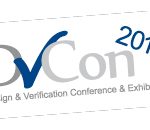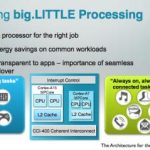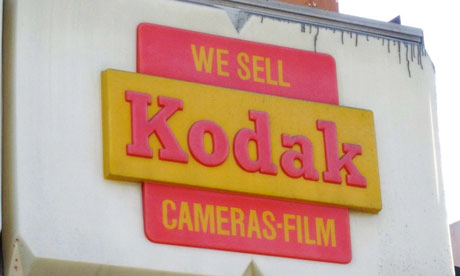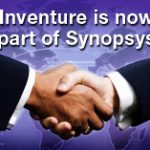One thing I do as an internationally recognized semiconductor blogger is listen to the quarterly conference calls of companies that drive our industry. TSMC is always interesting, I really like the honesty and vision of Dr. Morris Chang. Cadence is good, I always want to hear what Lip-Bu Tan has to say. Oracle and Larry Ellison, Synopsys, Intel, AMD, Qualcomm, Broadcom, Altera, Nvidia, and a couple of others.
If I miss the actual call I get the transcript from Seeking Alpha. Here is the most recent AMD call Q4 2011. I post this blog as an observation and discussion rather than a report of facts and figures. I respect GlobalFoundries and hope they succeed but I do not understand the relationship between AMD and GFI. But then again, I’m just a blogger so help me out here:
Granted, the “spin-off” of a new corporate entity is a difficult endeavor, especially when AMD retained a substantial % of GFI (and ATIC, GFI’s parent company, received a substantial % of AMD).
For a while, AMD would routinely incorporate a loss in their quarterly results, based upon their percentage ownership of GF which made sense to me. Prior to the spin-off, AMD’s losses reflected 100% of the fab expense, and immediately after the spin-off, AMD’s one-third ownership of GF resulted in roughly 1/3 of the previous losses still being reported quarterly.
However, AMD’s % ownership of GFI declined, due to the increased investment by ATIC in GFI, and the acquisition of Chartered Semi. When AMD’s ownership was reduced below 15%, the declaration was that “we will no longer incorporate the ongoing financial results of our ownership in GFI in quarterly reports… the investment in GF will be treated as a long-term asset.” OK, that makes sense too.
Then, there were different classes of GFI shares issued. And, throughout 2010-11, there were repeated updates in AMD’s GAAP quarterly financials, based upon updates to the book value of the investment in GFI, in contradiction to the earlier declaration.
In a couple of cases, AMD reported a significant gain in the value of its investment, due to a recalculation of the value of its (diminished) percentage share in GF, during the acquisition of Chartered:
http://www.sec.gov/Archives/edgar/data/2488/000119312511163112/filename1.htm
However, in the most recent 4Q11 fiscal quarter, AMD recorded a loss of $209M. It is unclear to me how AMD intends to represent the ongoing value of their investment in GlobalFoundries.
Actually, it’s hard for me to believe that their value in GFI could increase, as was reported in a couple of recent quarters. AMD no longer invests in the ongoing operations of GFI, ATIC does. I highly doubt GFI is profitable, based upon the losses incurred prior to spin-off plus the integration of Chartered Semi, lacking new sources of external customer revenue. Yet, AMD has recently reported both substantial quarterly GAAP gains and losses with regards to GFI, amounts which far exceed their operating profit each quarter. This financial reporting method is very puzzling to say the least.
The “cost-plus” wafer purchase agreement that AMD established with GFI is clearly an opportunistic one for AMD, which leads to a discussion of a very unusual financial agreement:
http://semiaccurate.com/2011/04/04/amd-and-global-foundries-agreement-not-what-it-seems/
AMD is contractually bound to provide additional payments (up to $400M) to GFI this year, above and beyond the wafer purchase agreement between the two entities. The explanation for these payments was “based upon obtaining sufficient 32nm yields”. Even for a foundry blogger it is hard to understand how a wafer-purchase agreement requires an additional “bonus payment”, up to $100M quarterly. AMD must be assuming it can move lots of additional (32nm SOI) product, to make a committed payment based upon wafer yield, not wafer volume. The amount of $100M per quarter is dangerously close to AMD’s quarterly free-cash flow and non-GAAP profits.
And now IBM “quietly” starts to make chips for AMD?
So, it is not clear to me what relationship AMD and ATIC have maintained, in terms of the value of AMD’s holding in GFI, and the financial obligations (beyond customer and supplier) that AMD has to ATIC in 2012. This lack of transparency is troubling, and in my mind it brings into question the credibility of each quarterly financial report.
For that reason alone, I would consider AMD to be an unsound (long-term) investment, although it certainly makes for interesting “short-term trading”. This is an observation, opinion, for entertainment purposes only, I do not own AMD stock nor do I have investments in related companies.
There is also some good and some perplexing news from GF, unrelated to its relationship with AMD:
GFI announced that the new fab in Malta, NY, will be providing prototype wafers to IBM in mid-2012. That’s the good news.
However, it’s not really a “big win” for GFI, which may not be clear from the press release. Chartered Semi has been a second source for the processor parts used in the Microsoft Xbox 360 family. Microsoft insisted, of course, that IBM Microelectronics have a viable second source, and IBM ensured that Chartered was a qualified supplier of the corresponding SOI technology.
So, in my opinion, this current announcement is really just an extension of that second-source agreement – Microsoft clearly demanded a second source for the processor in the upcoming Xbox 720 product. However, the Xbox 360 parts were never really a large source of profit for Chartered – it was more a way for Microsoft to negotiate the best pricing from IBM. Although additional revenue for GFI is a good thing, the parameters of this agreement are likely not very different from the previous second-sourcing deal, and thus, not an exclusive, nor high-margin revenue opportunity.
The perplexing thing is that the resources invested in Malta on 32nm SOI bring-up as a second source to IBM will be diverted from 28nm bulk technology bring-up. In the 2013-2015 time frame, TSMC has made it clear that 28nm is going to be a very important source of revenue for them and I know this to be true.
Last week I sent a version of this to GFI for clarification / comment but have not heard back yet. If somebody else out there has more information or can correct me please post in the comment section or email me directly: dnenni at SemiWiki dot com.











